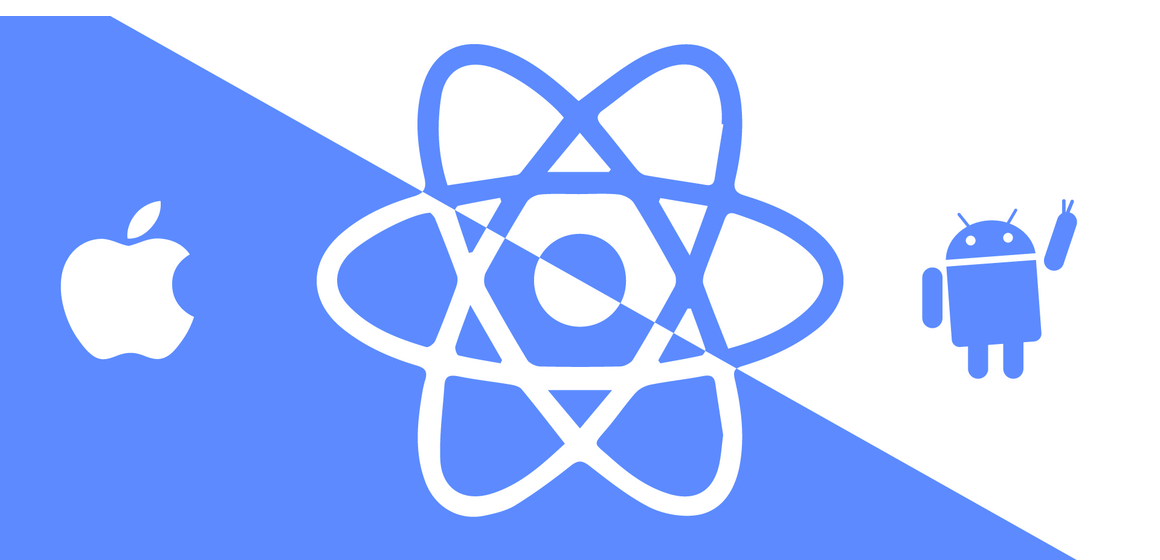Flutter VS React Native: Which One is Best for Your App Development Needs?

Mobile app development has become a vital aspect of businesses today, and choosing the right framework can significantly impact the success of your app. Two popular frameworks, Flutter VS React Native, have gained substantial attention in the development community. In this article, we will compare Flutter and React Native to help you make an informed decision for your app development needs.
What is Flutter?
Flutter, developed by Google, is an open-source UI software development kit (SDK) that allows developers to create natively compiled applications for mobile, web, and desktop platforms using a single codebase. It uses the Dart programming language, known for its simplicity and ease of learning.
Benefits of Flutter VS React Native
Fast Development: Flutter’s hot reload feature enables developers to see changes in real-time, reducing development time significantly.
Beautiful UI: Flutter provides a rich set of customizable widgets, offering a pixel-perfect UI design for both iOS and Android.
High Performance: Flutter’s unique architecture, called Flutter Engine, eliminates the need for JavaScript bridges, resulting in excellent app performance.
Code Reusability: Flutter allows code reuse between different platforms, saving development effort and reducing maintenance costs.
Growing Community: Flutter has a rapidly growing community that actively contributes to its improvement and provides support.

Drawbacks of Flutter
Limited Libraries: Flutter’s library support is not as extensive as React Native, which may require developers to build certain features from scratch.
Less Maturity: Compared to Flutter VS React Native, Flutter is relatively new, which means it may have a steeper learning curve for some developers.
What is React Native?
React Native, developed by Facebook, is an open-source framework for building cross-platform mobile applications using JavaScript and React. It allows developers to write code once and deploy it on multiple platforms, including iOS and Android.
Benefits of React Native
Code Reusability: React Native enables code reuse, allowing developers to write a single codebase for both iOS and Android apps, saving time and effort.
Large Community and Ecosystem: React Native has a vast and active community, which means you can find plenty of libraries, components, and resources to accelerate development.
Native-like Performance: React Native leverages native components, resulting in app performance that is indistinguishable from apps built using native frameworks.
Drawbacks of React Native
UI Limitations: React Native’s UI components may not perfectly match the native UI elements of each platform, requiring additional customization.
Dependency on Native Modules: In some cases, developers may need to write custom native modules to access specific device features not supported by React Native.
Performance
Flutter Performance
Flutter’s performance is remarkable due to its unique architecture. The Flutter Engine eliminates the need for JavaScript bridges and directly compiles the code into native ARM machine code. This approach provides excellent performance, smooth animations, and faster app startup times.
React Native Performance
React Native also delivers good performance but relies on JavaScript bridges to communicate between JavaScript and native code, which can introduce some overhead. While the performance gap between Flutter and React Native has narrowed over time, Flutter still has the edge when it comes to performance-intensive apps.

User Interface (UI) Development
Flutter UI Development
Flutter provides a rich set of pre-designed widgets that enable developers to create beautiful and responsive UIs. These widgets can be customized to match the platform’s native look and feel, ensuring a consistent user experience. Flutter’s UI development is known for its smooth animations and visually appealing designs.
React Native UI Development
React Native offers a wide range of pre-built UI components that can be easily assembled to create native-like user interfaces. However, achieving pixel-perfect UI designs might require additional customization and styling to match each platform’s UI guidelines.
Code Reusability
Flutter Code Reusability
Flutter allows developers to reuse code across different platforms, including iOS, Android, web, and desktop. With a single codebase, developers can achieve feature parity across multiple platforms, reducing development effort and maintenance costs.
React Native Code Reusability
React Native also emphasizes code reusability and allows developers to write once and deploy on multiple platforms. However, certain platform-specific components or features may require separate implementations, leading to slightly less code reusability compared to Flutter.
Development Time and Cost
Flutter Development Time and Cost
Flutter’s hot reload feature significantly reduces development time as developers can see the changes in real-time. Moreover, the code reuse capability enables faster development across multiple platforms, ultimately reducing the overall development cost.
React Native Development Time and Cost
React Native also offers faster development compared to building separate native apps for iOS and Android. However, the need for additional customizations and potential platform-specific adjustments might slightly increase the development time and cost compared to Flutter.
Community and Ecosystem
Flutter Community and Ecosystem
Flutter has a rapidly growing community, with active engagement from developers worldwide. The Flutter community provides extensive resources, libraries, and packages, which contribute to the framework’s overall ecosystem. Additionally, Google provides regular updates and improvements to Flutter, ensuring its continuous growth.
React Native Community and Ecosystem
React Native boasts a large and mature community that has been actively contributing to its development since its inception. The community has created numerous open-source libraries, components, and tools, making it easier for developers to build complex applications. Facebook, the creator of React Native, also actively maintains and updates the framework.

Platform Support
Flutter Platform Support
Flutter offers comprehensive platform support for iOS, Android, web, and desktop applications. Developers can create apps for multiple platforms from a single codebase, ensuring a consistent user experience across different devices.
React Native Platform Support
React Native primarily focuses on developing mobile applications for iOS and Android. While there are efforts to support other platforms, such as web and desktop, the support for these platforms is still evolving and may not be as robust as Flutter.
Popularity and Industry Adoption
Flutter Popularity and Industry Adoption
Flutter has gained significant popularity in recent years due to its ease of use, fast development, and excellent performance. Many prominent companies, including Google, Alibaba, and Tencent, have adopted Flutter for their mobile app development needs, showcasing its growing industry adoption.
React Native Popularity and Industry Adoption
React Native has been widely adopted by various industry players since its release. Many popular apps, including Facebook, Instagram, and Airbnb, have been built using React Native. Its extensive community support and established presence make it a preferred choice for many developers and companies.
Documentation and Learning Curve Flutter VS React Native
Flutter Documentation and Learning Curve
Flutter’s official documentation is comprehensive and well-maintained, providing detailed guides, tutorials, and examples. The Flutter community also actively contributes to the documentation, offering additional resources and support. While Flutter has a relatively easy learning curve for developers familiar with object-oriented programming, learning the Dart programming language may require some initial effort.
React Native Documentation and Learning Curve
React Native’s documentation is extensive and covers various aspects of app development. It provides clear instructions and examples to help developers get started. Since React Native uses JavaScript and React, developers with prior knowledge of these technologies can quickly adapt to React Native. However, developers new to JavaScript and React might face a slightly steeper learning curve.
Conclusion Flutter VS React Native
Both Flutter and React Native offer powerful frameworks for developing cross-platform mobile applications. Choosing the best framework depends on your specific project requirements, development team’s expertise, and long-term goals.
If you prioritize high performance, custom UI designs, and code reusability across multiple platforms, Flutter could be the ideal choice for you. Flutter’s fast development cycles and growing community make it suitable for startups and projects with strict timelines.
On the other hand, if you have a team experienced in JavaScript and React, and you value a large ecosystem of libraries and components, React Native might be a better fit. React Native’s strong industry adoption and support from Facebook make it a reliable option for larger-scale applications.
In the end, consider your project’s needs, your team’s skillset, and the long-term scalability and maintenance aspects before making a decision.
ReadMore: Apple and Samsung Are Racing to Create the Ultimate Camera Phone
FAQs Flutter VS React Native
Can I use both Flutter and React Native in the same project?
Yes, it is possible to integrate both Flutter and React Native into the same project. However, it requires additional setup and may introduce complexities in terms of code integration and maintenance.
Which framework is better for developing cross-platform apps?
Both Flutter and React Native are excellent choices for cross-platform app development. The decision depends on specific project requirements, team expertise, and the desired balance between performance and ecosystem support.
Flutter VS React Native Which One better for performance-intensive apps?
Flutter’s architecture and direct compilation to native code give it an edge in terms of performance for intensive apps. However, React Native’s performance is also quite good and has improved significantly over time.
How active are the Flutter and React Native communities?
Both Flutter and React Native have active communities with developers worldwide. The communities contribute to the frameworks, share knowledge, and provide support through forums, social media groups, and open-source contributions.
Which framework has better support for native device features Flutter VS React Native?
React Native, being built on top of native components, has good support for accessing native device features. However, Flutter VS React Native also provides plugins and packages to access device-specific functionality, ensuring compatibility with various native features.
ReadMore: The Importance of Responsive Design for Mobile Devices 2023












One Comment